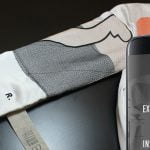
When we think about artificial intelligence, we often imagine robots performing tasks on the warehouse or factory floor that were once exclusively the work of people. This conjures up the specter of lost jobs and upheaval for many workers. Yet, it can also seem a bit remote — something that will happen in “the future.” But the future is a lot closer than many realize. It also looks more promising than many have predicted.
Stitch Fix provides a glimpse of how some businesses are already making use of AI-based machine learning to partner with employees for more-effective solutions. A five-year-old online clothing retailer, its success in this area reveals how AI and people can work together, with each side focused on its unique strengths.
The company offers a subscription clothing and styling service that delivers apparel to its customers’ doors. But users of the service don’t actually shop for clothes; in fact, Stitch Fix doesn’t even have an online store. Instead, customers fill out style surveys, provide measurements, offer up Pinterest boards, and send in personal notes. Machine learning algorithms digest all of this eclectic and unstructured information. An interface communicates the algorithms’ results along with more-nuanced data, such as the personal notes, to the company’s fashion stylists, who then select five items from a variety of brands to send to the customer. Customers keep what they like and return anything that doesn’t suit them.
Stitch Fix’s approach illustrates three lessons about how to combine human expertise with AI systems. First, it’s important to keep humans in the business-process loop; machines can’t do it alone. Second, companies can use machines to supercharge the productivity and effectiveness of workers in unprecedented ways. And third, various machine-learning techniques should be combined to effectively identify insights and foster innovation.
As research we’ve conducted across industry and academia shows, companies have an unprecedented opportunity to tap ongoing advances in AI and machine learning research to reinvent business processes. For instance, in analyzing a five-year sample of almost 1,150 papers, we identified at least 12 techniques, visible in the chart below, that can be readily applied and combined with each other within a process. Stitch Fix is already applying several of these machine learning techniques in service delivery and R&D — and other companies can follow its lead.

Some extremely successful companies have made great use of recommendation engines to boost sales or improve customer satisfaction. When it comes to recommendations, is there room for improvement in the way Amazon and Netflix operate?
Stitch Fix, which lives and dies by the quality of its suggestions, has no choice but to do better. And it can’t rely solely on machines to do this. The company collects as much information about a client as it can, in both structured and unstructured form. Structured data includes surveys with personal information such as body measurements and brand preferences. Unstructured data can be derived from social media accounts, such as Pinterest, or through online notes from people about why they are buying new clothes, such as a special occasion, a change of season, or because a certain new style caught their eye.
The automated recommendation system is at its best when dealing with structured data. But to make sense of unstructured data, people and their judgment are needed. Say a client wants a new pair of stylish jeans, an item that’s notoriously tricky to fit right to a person’s measurements. To start, the algorithm finds jeans (across a range of fabrics, styles, and even sizes) that other clients with the same inseam decided to keep — a good indicator of fit.
Next, it’s time to pick the actual pair of jeans to be shipped. This is up to the stylist, who takes into account a client’s notes or the occasion for which the client is shopping. In addition, the stylist can include a personal note with the shipment, fostering a relationship, which Stitch Fix hopes will encourage even more useful feedback.
This human-in-the-loop recommendation system uses multiple information streams to help it improve. The algorithm absorbs feedback directly from the client — whether or not she or he (the company added men’s options in late September) decided to keep an item of clothing. And the stylist improves and adjusts based on cues gleaned from client notes and with insights from previous interactions with the customer.
The company is testing natural language processing for reading and categorizing notes from clients — whether it received positive or negative feedback, for instance, or whether a client wants a new outfit for a baby shower or for an important business meeting. Stylists help to identify and summarize textual information from clients and catch mistakes in categorization. Because the algorithms are never far from human oversight, Stitch Fix can confidently test new machine learning technologies without worrying that the experimentation will disrupt the client experience.
How does the role of machine-augmented stylist really play out? Stitch Fix employs more than 2,800 stylists, dispersed across the country, all of them working from home and setting their own hours. In this distributed workforce, stylists are measured by a variety of metrics, including the amount of money a client spends, client satisfaction, and the number of items a client keeps per delivery. But one of the most important factors is the rate at which a stylist puts together a collection of clothes for a client.
So speed matters, as does accuracy. This is where the work interface comes into effect. To enable fast decision making, the screen on which a stylist views recommendations shows the relevant information the company keeps about a client, including apparel and feedback history, measurements, and tolerance for fashion risks — it’s all readily accessible. Moreover, the recommendations are tuned to reduce the amount of time a stylist spends searching for items in vain.
In order to make sure the stylists’ selections are effective, Stitch Fix’s system can vary the information a stylist sees to test for bias. For instance, how might a picture of a client affect a stylist’s choices? Or knowledge about a client’s age? Does it help or hinder to know where a client lives?
By measuring the impact of modified information in the stylist interface, the company is developing a systematic way to measure improvements in human judgment.
Even with the constant monitoring and algorithms that guide decision making, according to internal surveys, Stitch Fix stylists are mostly satisfied with the work. And this type of work, built around augmented creativity and flexible schedules, will play an important role in the workforce of the future.
The fashion industry is no stranger to fast cycles of learning. One of the great benefits Stitch Fix sees from collecting and analyzing so much data is an ability to predict trends. For example, the company’s engineers are developing machine learning classifiers to find trends by using the simple yes-or-no decision that a client makes when they buy an item or send it back. From this seemingly simple data, the team has been able to uncover which trends change with the seasons and which fashions are going out of style.
Another benefit of all this data is research aimed at developing a computer vision system that can interpret style and extract a kind of style measurement from images of clothes. The system itself would undergo unsupervised learning, taking in a huge number of images and then extracting patterns or features and deciding what kinds of styles are similar to each other. This “auto-styler” could be used to automatically sort inventory and improve selections for customers.
In addition to developing an algorithmic trend-spotter and an auto-styler, Stitch Fix is developing brand new styles — fashions born entirely from data. The company calls them “frankenstyles.” These new styles are created from a “genetic algorithm,” modeled after the process of natural selection in biological evolution. The company’s genetic algorithm starts with existing styles that are randomly modified over the course of many simulated “generations.” Over time, a sleeve style from one garment and a color or pattern from another, for instance, “evolve” into a whole new shirt.
As a machine learning–native company, Stitch Fix bears watching. Forbes estimatesthat in 2015 the company brought in $250 million in revenue, and it predicts a 50% increase in 2016. At the same time, Stitch Fix has tripled its workforce over the past two years. The company’s approach shows that humans and machines can augment each other, producing better process results, at scale, than either could do alone.
We’re only at the beginning of the era of artificial intelligence. Some upheaval is to be expected. But we are starting to see how AI can change industries, improve productivity, and even benefit a new generation of employees.
[Source:-Harvard Business Review]






